Apr 13, 2025
Apr 13, 2025
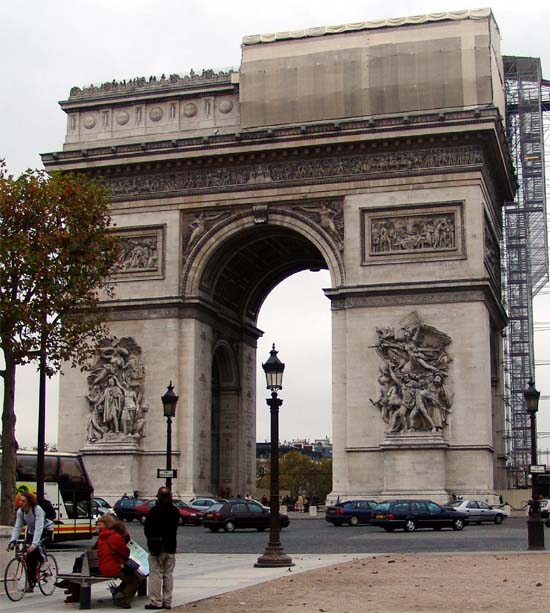
The arch from the Champs Elysees side
In 1806, Napoleon I conceived of a triumphal arch patterned after those of ancient Rome and dedicated to the glory of his imperial armies. The structure was designed by Jean Francois Therese Chalgrin (1739-1811) and completed in 1836 during the reign of Louis Philippe. Its design marks it unmistakably as a product of late 18th-century romantic neoclassicism. This huge arch (164 feet high, 148 feet long and 72 feet wide) stands at the end of the Avenue des Champs Elysees and in the center of the Place de l'Etoile, formed by the intersection of 12 radiating streets.
At the bases of the Arc's pillars are four huge relief sculptures, commemorating The Triumph of 1810 (by Cortot); Resistance, and Peace (both by Etex); and The Departure of the Volunteers, more commonly known as La Marseillaise (by Francois Rude).
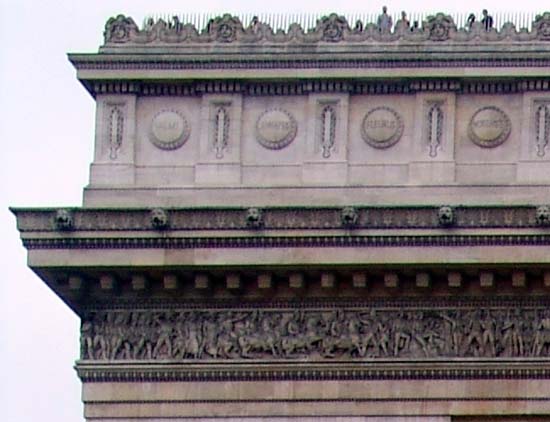
The attic is decorated with 30 shields, each of which is inscribed with the name of a victory. Pilasters with sabres and palmettes alternate with the shields.
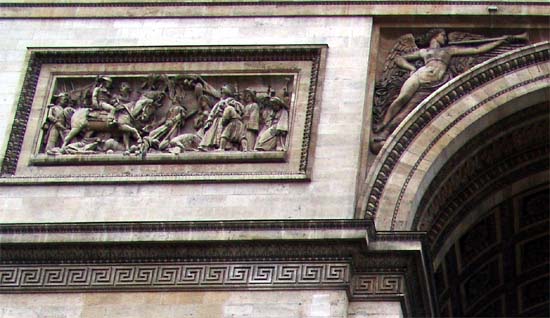
A close up of the rectangular Bas Relief.
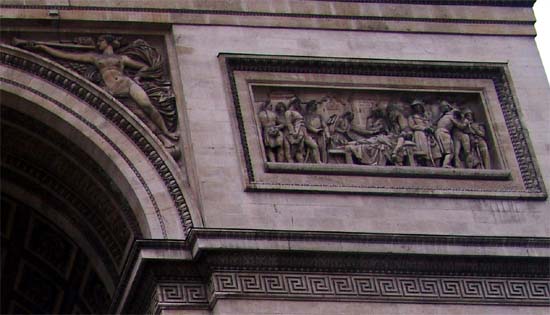
A close up of another rectangular Bas Relief.
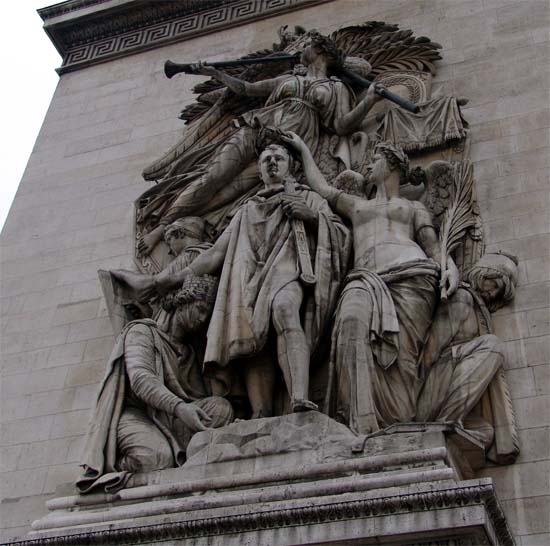
Detail of The Triumph of Napoleon by Cortot.
Victory crowns Napoleon with a laurel wreath while a town surrenders at his feet, History inscribes the names of the battles won on a stone tablet, and Fames blows a trumpet.
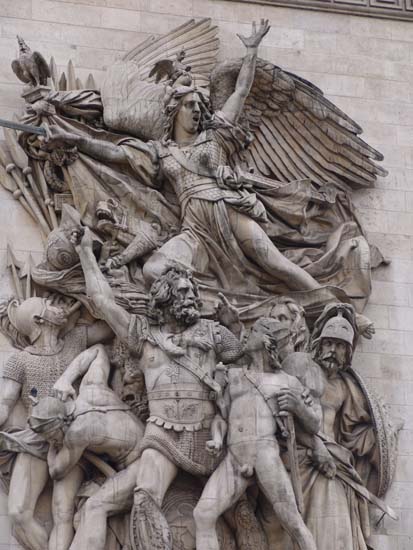
Detail of La Marseillaise by Francois Rude.
The most famous of the four reliefs on the faces of the arch flanking the opening, this emotional composition depicts the French people rallying against enemies from abroad. (Rude's own father had been one of these volunteers.) These citizens, both nude and in classical armor, are roused to patriotic fervor by the Roman goddess of war, Bellona, who has also been identified as a personification of Liberty. This grouping so aroused spectators' patriotism that the work became known as "La Marseillaise," the French national anthem written in 1792 – the same year as the departure of the volunteers.
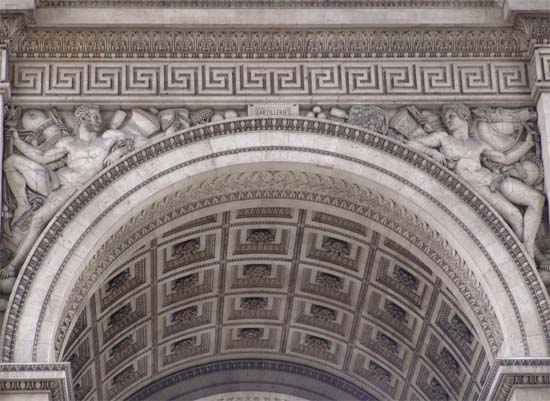
The original architect was Chalgrin; after his death, the work was continued by Joust (or Goust) from 1811-14 until it stopped after the defeat of Napoleon. In 1833 work was begun again. The name of Blouet, who had the honor of completing the monument, is engraved on it. The inscription (translated) reads: "This monument which was begun in 1806 to honour the great army, was left unfinished for many years, was continued in 1823 with a new purpose, and was completed in 1836 in the reign of King Louis-Philippe I who dedicated it to the glory of France's armed forces. G. A. Blouet, architect" (Dillange 7).
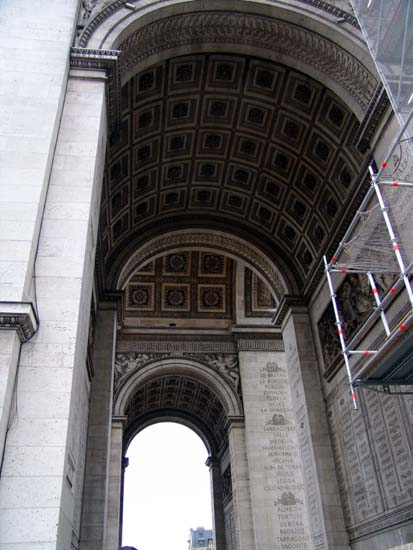 Engraved are the names of various victories, as well as those of 558 generals on the inside walls of the Arch.
Engraved are the names of various victories, as well as those of 558 generals on the inside walls of the Arch.
The Other side of the Arch
The arch when viewed from the Neuilly side as Sculptures by Etex: Peace with a man, protected by Minerva, putting his sword back into his scabbard; at his side peasants get back to work; and Resistance with a naked soldier defending his family, urged on by the spirit of the future.
Besides there are different rectangular bas reliefs on top of these sculptures.
Due to the construction work and limitation of time, Anmol could not take those pictures and for now are not included in this photo essay. Hopefully I will visit France again and maybe able to capture some more images.
Lastly Arc de Triomphe has influenced the architecture of Washington Arch at Washington Square, NYC.
02-Nov-2004
More by : Dimpy Chowdhry